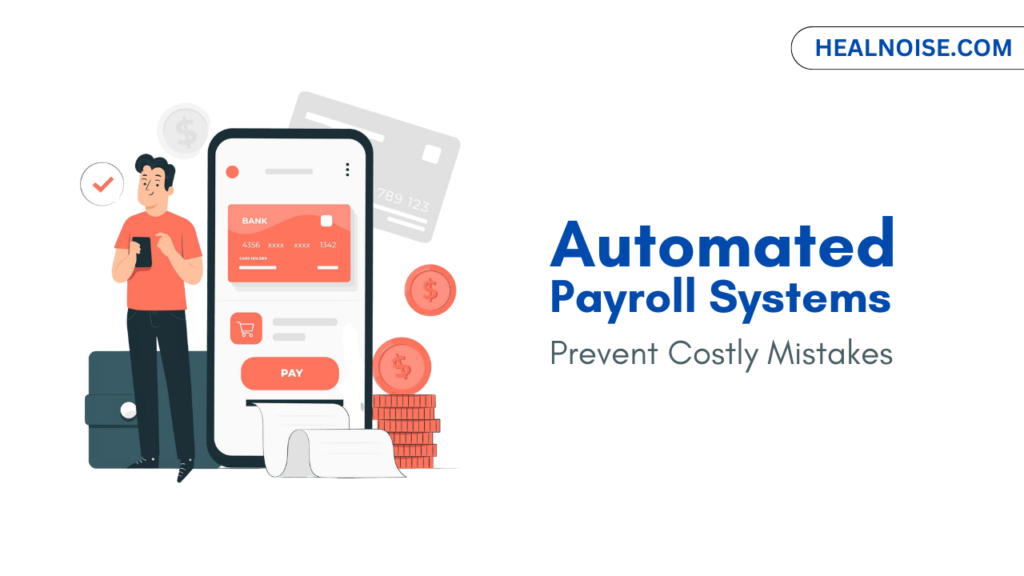- The Essentials of Automated Payroll Systems
- Common Payroll Errors and Their Financial Impact
- Benefits of Automating Payroll
- Real-World Examples: Businesses Benefiting from Automated Payroll
- How to Choose the Right Automated Payroll System
- Checklist for Evaluating Software Options:
- Future Trends in Payroll Management
- Frequently Asked Questions About Payroll Automation
- Concluding Thoughts: Is Payroll Automation the Right Move?
The Essentials of Automated Payroll Systems
As businesses evolve, the landscape of payroll management can become increasingly complex, demanding sophisticated solutions beyond traditional processing methods. An online payroll system emerges as a pivotal innovation that automates repetitive tasks, thereby reducing the likelihood of human errors. These solutions set themselves apart from manual procedures by providing flawless integration with current company operations, therefore guaranteeing accurate and compliant execution of payroll chores from tax filing to wage computation.
Unlike manual approaches that depend on significant human involvement and are prone to mistakes, automated payroll systems use advanced algorithms to handle data precisely and fast. This change saves important time and helps companies stay compliant with often changing rules. Automated solutions allow businesses to concentrate on strategic projects promoting expansion instead of mired in administrative issues.
Common Payroll Errors and Their Financial Impact
Payroll mistakes could have far-reaching effects on employee happiness and financial situation of a business. Missteps such as miscalculating overtime, underestimating taxes, or failing to update employee records can lead to significant financial losses. These mistakes cost companies all around billions every year; often, they spend outrageous sums to fix faults and pay fines. The financial impact includes the intangible loss of employee trust and morale in addition to direct expenses.
Using automated payroll systems can lower these risks by making calculations more accurate and making sure that rules are followed. These systems are also very reliable, which protects businesses from legal problems and damage to their reputation. By automating payroll, businesses can greatly lower the financial risk of making these common mistakes, laying the groundwork for long-term success.
Benefits of Automating Payroll
Automated payroll systems offer many benefits beyond minimizing errors. They provide enhanced efficiency by swiftly handling complex computations, which ensures employees are paid promptly and accurately. Furthermore, these systems are designed to adapt continuously to changes in tax regulations, reducing the need for constant manual updates and ensuring ongoing compliance.
Automation has advantages not just for big businesses. Furthermore benefiting small and medium-sized businesses are these solutions since they contribute to a more fair competitive environment. Automation lowers overhead and administrative load, therefore enabling these companies to concentrate on competitively allocated resources and expansion prospects. Larger companies, meantime, gain from the scalability and adaptability these systems offer, which effectively supports an expanding staff.
Real-World Examples: Businesses Benefiting from Automated Payroll
Consider the case of a medium-sized retail business that transitioned to automated payroll. The company reported a remarkable 50% reduction in payroll processing time and observed a substantial error decline. This resulted in increased operational efficiency and employee satisfaction. Similarly, a manufacturing firm experienced improved compliance and cost reductions, demonstrating the strategic advantage of embracing technology.
These success stories highlight the clear return on investment (ROI) companies implementing automated payroll systems may get. Emphasizing agility and adaptation in the market, firms maximize their personnel management and position themselves for long-term success by simplifying their payroll procedures.
Read More: 10 Best MyFastBroker Trading Apps in the USA: Free Stock Trading
How to Choose the Right Automated Payroll System
Selecting the right automated payroll system requires careful consideration of multiple factors. Businesses should evaluate the system’s scalability to ensure it accommodates future growth. The capacity to integrate smoothly with current human resources and accounting systems is essential for effective operations. Furthermore, comprehending the pricing structure and being aware of potential hidden costs is imperative during the decision-making phase.
Checklist for Evaluating Software Options:
- Assess system scalability for future growth accommodation
- Examine integration capabilities with current tools
- Scrutinize pricing models for potential hidden fees
- Review customer support and training offerings
- Identify essential features tailored to your business needs
Future Trends in Payroll Management
Thanks to innovative technologies transforming traditional methods, payroll administration is seeing a notable change. Leading the push are artificial intelligence (AI) and blockchain technology, both of which are bringing complex industry solutions. These innovative developments enable companies to use predictive analytics tools, therefore helping them to see payroll needs and act early on to meet them. Using these technologies can help companies guarantee a more accurate, quick, and responsive payroll system, so improving their general operational efficiency.
Furthermore, these innovations improve security and increase user experience, increasing operational efficiency. The latest advancements in payroll management illustrate a future where AI and automated analytics are fundamental, paving the way for streamlined and insightful payroll processes.
Frequently Asked Questions About Payroll Automation
Despite the clear benefits, many businesses have questions about implementing payroll automation. Data security, system complexity, and integration with existing platforms are common concerns. Modern automated payroll systems address these issues with advanced security measures and user-friendly interfaces, facilitating smooth integration and operation.
Transparent processes and robust training programs help demystify these systems, enabling businesses to effortlessly transition to more accurate and efficient payroll methods. Addressing these frequently asked questions is essential for building confidence in automated payroll solutions.
Read More: Prince Narula Digital PayPal Strategy: New Era of Digital Payment
Concluding Thoughts: Is Payroll Automation the Right Move?
Automating payroll processes offers a compelling solution for businesses seeking to safeguard their financial health. The numerous benefits, including error reduction, compliance consolidation, and time savings, make a strong case for adopting payroll automation. Businesses can make informed decisions by carefully evaluating the outlined factors and anticipating industry trends.
Ultimately, transitioning to an automated payroll system provides a tangible strategic advantage. It allows businesses to redirect their focus on innovation and growth, positioning themselves for sustained success in an increasingly competitive market.


